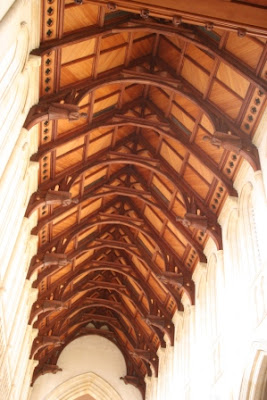Way up North



Along the way we decided to drop into
The Memorial Cross is 21-metre high and is set amidst trees and gardens. It is distinguished by its tiled exterior and a large bronze sword. William Cameron, built the cross as a memorial to the lost his son in World War I and as a tribute to those Australians who died in the war. The Ash Wednesday fires of 1983 damaged the cross and ruined the gardens. The latter have been re-established and the former replaced.


Just as we reached the parking lot, the weather turned for worse. It was raining hard with howling cold wind and a thick cloud of mist starting to come in. It was freezing cold with drop of tiny white flakes and we thought it was snowing. Since we were here, we braved the cold and walk in to see the cross. A quick look and see we left for Hanging Rock.

Hanging Rock is part of a small extinct volcano which rises to 105 metres above the surrounding plain. It was formed by lava emerging from a vent in the earth about six million years ago. The lava had an unusually high soda content and solidified into soda trachyte which also formed the Camel's Hump on
It is said in 1900 on Saturday 14th February, a party of schoolgirls from
Joan Lindsay's novel Picnic at Hanging Rock is based upon the St Valentine's Day picnic. The story was later made into a lyrical film by Peter Weir. The Rock was also reputed to have been a hideout for bushrangers in the gold rush era.
When we arrived at the foot of Hanging Rock, we decided to give it a miss since it was raining and misty. So we headed for




After this we visited the

To know more about the history of this church visit here.
The next place we visited was the




There is so much history of Chinese migration over here. This museum provides and insight of the Chinese people of

There are other places to visit like the pottery factory etc. but time was too short to see it all.







0 Comments:
Post a Comment
<< Home